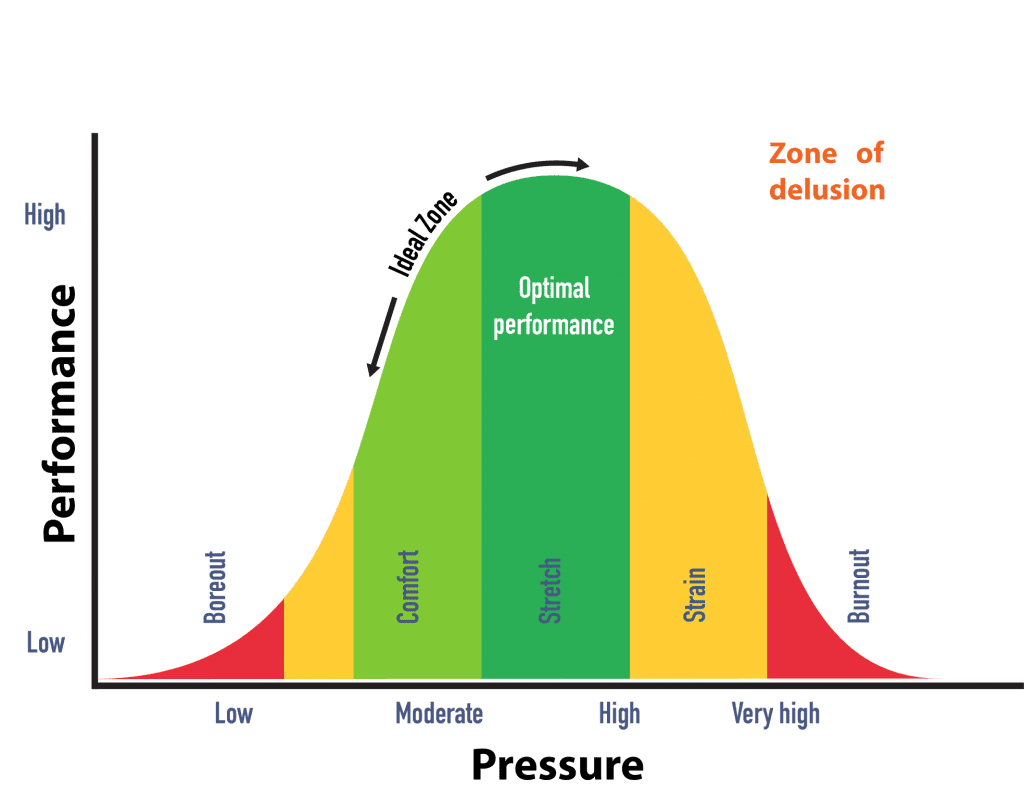How to get the pressure “just right”
During what might be one of the most stressful times we’ll face as a society, we wanted to let you in on a little secret: there is a Goldilocks zone of stress that is just right.
It turns out Goldilocks (yes, that little girl with blonde hair parading around a bear’s house, testing out the food and beds to find out what worked for her) is a Principle, where one knows when something is either too much or too little. So, let’s take work as an example. Many of us are either suffering from too much stress (e.g., working from the kitchen table with myriad distractions) or too little of it (not working, period, and killing your will to live while doom scrolling). The solution? Finding the “just-right” amount of stress.
“WTF would I want any stress at all?!” you might ask. To answer that, let’s first look at what it is and what it’s intended to do for us.
What is stress, anyway?
Stress exists on a spectrum. The original intent of stress was to serve as the body’s alert system to keep humans safe in emergencies. Our ancestors often faced stressful events that generated a “fight or flight” response. They would run for their lives, fight for their lives, or freeze and play dead (like Leo in The Revenant). Life was simpler back then, and our ancestors were not evolved enough to experience longer-term or chronic stress. They tended to simply live or die.
Moving into the modern age, work (or lack thereof) serves as a perfect example to discuss how much stress is just right, especially right now, when many people are constantly managing disproportionate stressors.

Are you rusting out?
If you don’t have enough stress – when you’re not working, stuck in a job you don’t like, or you don’t have any meaningful goals to deliver, you run the risk of “bore out” or “rust out” – a “too little” phenomenon where you feel uninspired, unmotivated, and apathetic. Let’s face it – humans were not designed to do nothing. We’re meant to be active, engaged, and have purpose.
Are you burning out?
On the other side of the curve is burnout. We grew up in an overloaded culture, where “keeping busy” is a badge of honour. We hustle to make money and keep up with the Joneses. But there is a point where the pressure becomes “too much,” and we risk burnout, a serious state of long-term stress where we spend too long in the evolutionary flight-or-fight response, eventually hitting physical and mental breakdown. While we’re meant to stay active, we are not designed to produce 24/7.
The risk of living on either side of this spectrum for too long is a slew of negative physical, mental and behavioural responses, and eventually, maybe even depression or anxiety.source.





